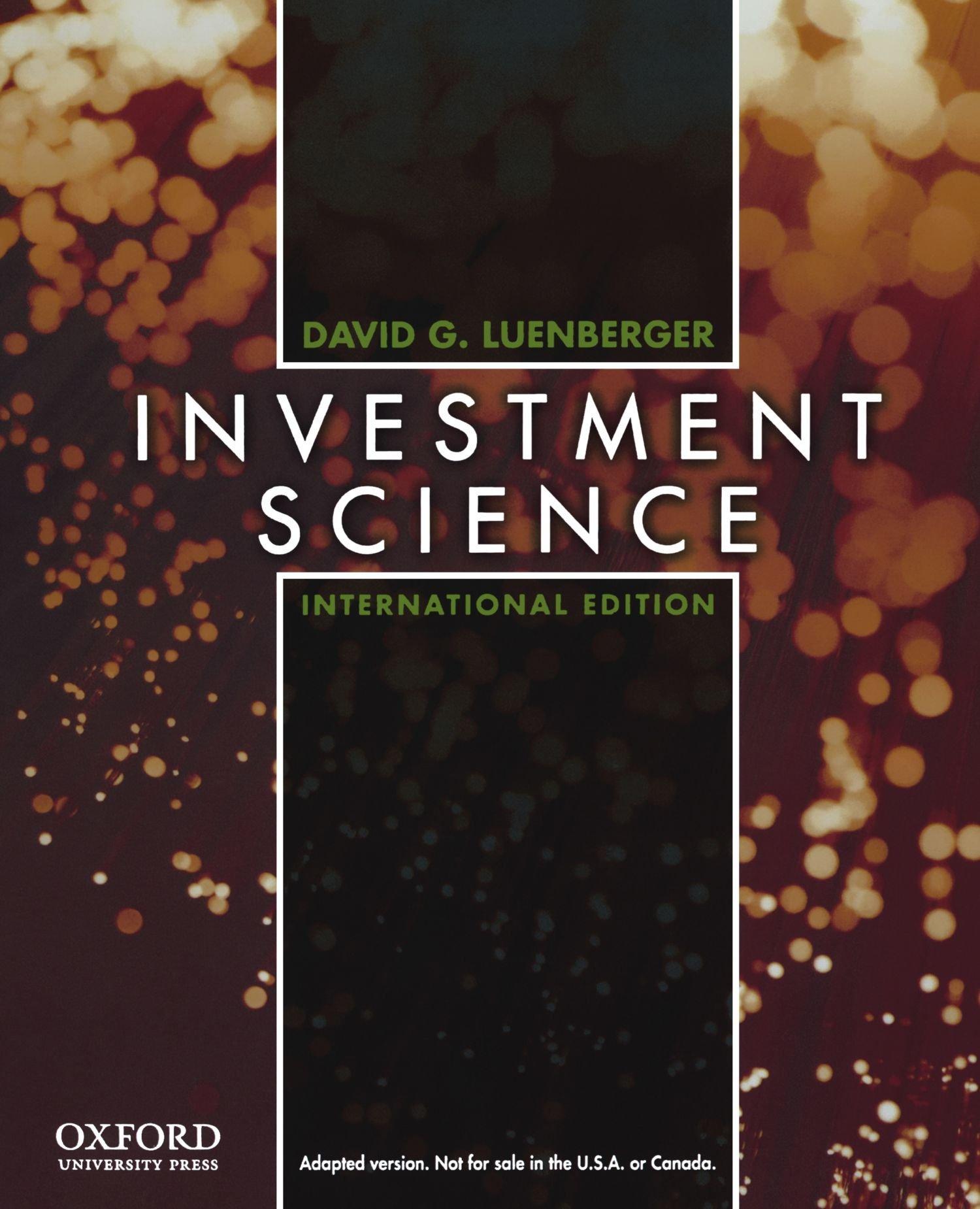Answered step by step
Verified Expert Solution
Question
1 Approved Answer
Risk and Return analysis (i) Analyse the durations of the 3 bonds and why does that matter in the analysis? Explain. (20 Points) (Hint: You


Risk and Return analysis
(i) Analyse the durations of the 3 bonds and why does that matter in the analysis? Explain. (20 Points) (Hint: You need to calculate the YTM of the 3 bonds in order to calculate the Duration).
(ii) Perform RCY analysis on the 3 bonds (40 Points) (Hint: Make use of spot rates to calculate the corresponding forward rates for coupon reinvestment calculation.)
Mr Lee is now in a similar situation Carlo has asked for a recommendation on the investment of another $10 million in excess cash. In estimating the future dollars from a bond purchase, Mr Lee needs a forecast of the direction and level of future interest rates. Carlo stated his belief that interest rates would remain unchanged for the next three years because of an unchanging expected inflation rated Mr Cheung suggests Mr Lee use the current term structure to gauge interest rate expectations. He uses the following table from Federal Reserve Statistical Release H.15 to get current spot rates on one-, two-, and three-year constant maturity Treasury securities. (See table below) Treasury constant maturities 1. year 2- 2-year 3- 3-year 4. 4-year 5- 5-year 6- 7-year Spot Rate Today 1.54% 1.61% 1.61% 1.63% 1.65% 1.75% Ah Lee's problem is to recommend the best investment among three different US Treasury bonds. The $10 million investment will be liquidated in three years to help repay a bank loan charging a fixed rate interest at 8.50% per year. The bonds, cach with a $1,000 par value and annual convention, are described as following: Bond Annual Coupon Current Price Maturity (Yrs) Bond 1 Bond 2 Bond 3 0% 11.625% 5.5% S882.50 S1403.39 S1107.59 (Note: I am open to what you want to discuss about the interest rate term structure over the next 3 years. Whether you agree or disagree with the view that term structure will remain the same Your interest rate view would directly affect your investment decision.) Given estimates of futures interest rates, however, the expected realized compound yield (RCY) can be calculated in order to cope with the reinvestment problem. For a bond that pays annual coupons over n years, the appropriate calculation for the annualized return is: RCY-[(Total future dollar value/Purchase price of bond)1 - 1). The total future dollar value from the investment includes the coupon payments, the earnings on each coupon, and the value of the bond at the end of the holding period. Mr Lee is now in a similar situation Carlo has asked for a recommendation on the investment of another $10 million in excess cash. In estimating the future dollars from a bond purchase, Mr Lee needs a forecast of the direction and level of future interest rates. Carlo stated his belief that interest rates would remain unchanged for the next three years because of an unchanging expected inflation rated Mr Cheung suggests Mr Lee use the current term structure to gauge interest rate expectations. He uses the following table from Federal Reserve Statistical Release H.15 to get current spot rates on one-, two-, and three-year constant maturity Treasury securities. (See table below) Treasury constant maturities 1. year 2- 2-year 3- 3-year 4. 4-year 5- 5-year 6- 7-year Spot Rate Today 1.54% 1.61% 1.61% 1.63% 1.65% 1.75% Ah Lee's problem is to recommend the best investment among three different US Treasury bonds. The $10 million investment will be liquidated in three years to help repay a bank loan charging a fixed rate interest at 8.50% per year. The bonds, cach with a $1,000 par value and annual convention, are described as following: Bond Annual Coupon Current Price Maturity (Yrs) Bond 1 Bond 2 Bond 3 0% 11.625% 5.5% S882.50 S1403.39 S1107.59 (Note: I am open to what you want to discuss about the interest rate term structure over the next 3 years. Whether you agree or disagree with the view that term structure will remain the same Your interest rate view would directly affect your investment decision.) Given estimates of futures interest rates, however, the expected realized compound yield (RCY) can be calculated in order to cope with the reinvestment problem. For a bond that pays annual coupons over n years, the appropriate calculation for the annualized return is: RCY-[(Total future dollar value/Purchase price of bond)1 - 1). The total future dollar value from the investment includes the coupon payments, the earnings on each coupon, and the value of the bond at the end of the holding periodStep by Step Solution
There are 3 Steps involved in it
Step: 1

Get Instant Access to Expert-Tailored Solutions
See step-by-step solutions with expert insights and AI powered tools for academic success
Step: 2

Step: 3

Ace Your Homework with AI
Get the answers you need in no time with our AI-driven, step-by-step assistance
Get Started


